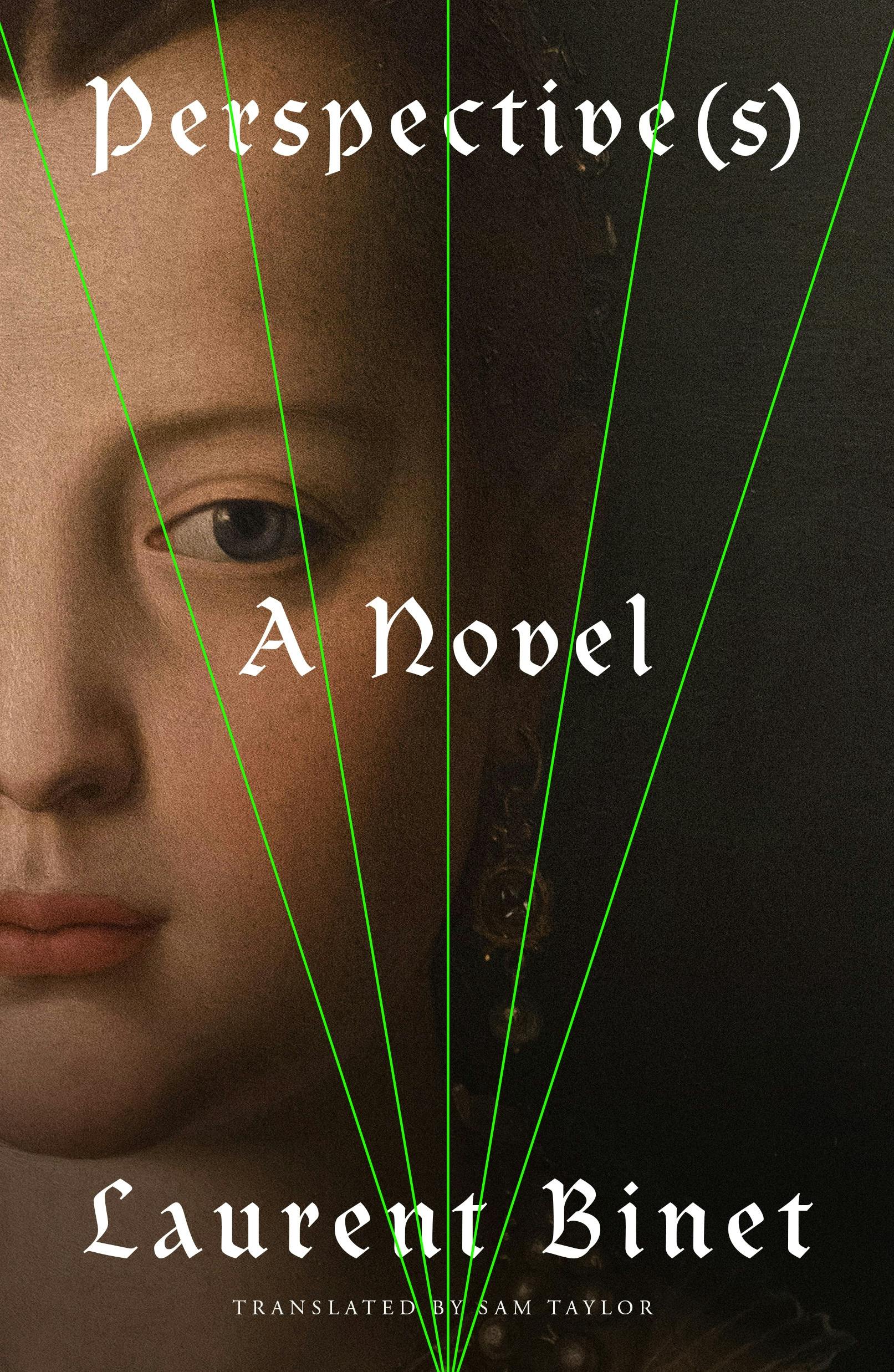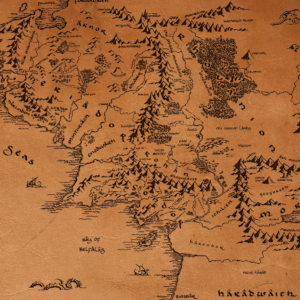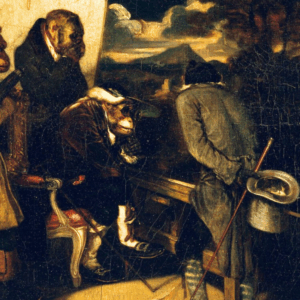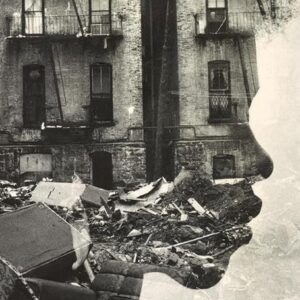Giorgio Vasari to Michelangelo Buonarroti
Florence, 2 January 1557
This time, my dear Master, I am not writing to you on behalf of the duke to beg you to return to Florence. Alas, it is a very different subject that obliges me to disturb you in your Roman days, which are, I know, so filled by your admirable work and by the numerous vexations that confront your art on a daily basis, particularly since the election of your new Supreme Pontiff, who – unlike his predecessors – seems little inclined to appreciate beauty, whether ancient or modern.
Do you remember, fifteen years ago, when I used to consult you about everything? You were generous enough back then to give me your advice, and so it was that I began to study architecture in a more methodical and fruitful manner, which I probably would never have done without you. It is, once again, your methodical intelligence that I need today, albeit in a very different discipline. The duke has entrusted me with a mission that is both unusual and rather delicate.
Jacopo da Pontormo, whose talent you praised when he was still a young and promising student, is no longer with us. He was found dead in the chapel of San Lorenzo, at the foot of his famous frescoes, which he had until then kept hidden behind wooden screens. That news alone would have prompted me to write to you, since someone must inform you of this terrible misfortune. But the circumstances of his death have driven me to turn to you for advice yet again, dear Master.
For, having discovered his body with a chisel embedded in his heart, just below his sternum, it seems to us difficult to sustain the theory that this was an accident. That is why the duke has tasked me with investigating this sad story, all the more so since it contains several shady elements, which I will let you judge for yourself: not only was Jacopo’s body penetrated by the chisel, it also bore traces of a violent blow to the head, delivered by a hammer which was found on the chapel floor among his other tools. Poor Jacopo was lying on his back, in front of his fresco of the Flood, which he appeared, from the traces of fresh paint we found upon it, to have repainted just before his death. You know as well as I how slow and painstaking Jacopo was in his work, how constantly he would correct his own errors, but I was greatly surprised by that alteration on a small part of the wall, which must inevitably leave a visible seam showing at a spot that cuts a figure in two. Knowing him as I did, I would have expected him to repaint the entire section of that wall if he was unsatisfied with even the smallest element of it.
However, the strange aspects of this affair do not end there. When the body was discovered, the Duke sent men to the house where Jacopo lived, on Via Laura: a sort of attic which one must climb a ladder to reach. There, among the mass of drawings and sketches stored in his studio, was found a painting that you know only too well, because you drew the original sketch for it long ago: you will no doubt recall Venus and Cupid, which proved so successful that it inspired copies all over Europe – perhaps you know that I myself had the privilege of painting a few of these, not that they bore comparison with Pontormo’s, though they were fortunate enough to find favour, no doubt because any work of art inspired by your drawings must inevitably bear some trace of your divine genius. That was back in the days before the return of the Inquisition, days which seem so remote to us now, when Cardinal Carafa had not yet become Pope Paul IV, and when nudes were not held in disgrace but highly sought after. Of course, nobody today would think of painting such a subject, but you know how eccentric our dear Jacopo could be. That, however, was not what drew our attention, because – putting aside the four years when Girolamo Savonarola stole the hearts of the simple folk – we other Florentines still understand and appreciate the beauty of the human body rather than considering it a diabolical obscenity. As it happens, the piece of fabric that Pontormo had previously added to cover the open thighs of the goddess had, on the copy that we found in his attic, been removed. But what startled us even more than that – and it is hard for me to find the right words to express this, since I have no desire to offend anyone, and particularly not His Excellency’s family – was that, in place of Venus’s face, Jacopo had substituted that of the duke’s eldest daughter, Miss Maria de’ Medici.
Now you can see just how unpleasant this story could become, and why the duke decided to entrust the resolution of the problem to someone in his inner circle, while simultaneously spreading the rumour that poor Jacopo committed suicide due to the state of extreme self-loathing into which he had fallen. The fact remains that this entire affair has plunged me into a thick fog of confusion, which is why – to help me unpick the tangled threads of this dark tapestry – I have taken the liberty of soliciting your great wisdom, which I know to be almost the equal of your talent and one of the most important elements of your genius.
Michelangelo Buonarroti to Giorgio Vasari
Rome, 5 January 1557
Master Giorgio, my dear friend, I cannot tell you how dejected I feel, to the point that I have not left my bed for what seems an eternity. In truth, I was already reeling under all the worries caused by the work on St Peter’s, but Jacopo’s death was the final nail in my coffin, so to speak, and I wept when I read your letter. Jacopo was a painter of great talent, and to my mind one of the best, not only of his generation (the one born between mine and yours, since I am at death’s door while you are in the prime of life), but quite simply of his time. I do not know if I am truly the right person to help you find the author of this awful crime, inconceivable in the eyes of God and men; I fear that you are somewhat overestimating the extent of my wisdom, because here in Rome people have been saying for many years that I have grown senile and mad. Nevertheless, since I wish to be agreeable to you, just as I wish to honour Pontormo’s memory, I am disposed to help you as far as my resources allow. Perhaps, from an oblique – that is to say, a non-Florentine – point of view, I may be useful to you in your investigation. If one wants to approach the problem with the rigour and logic of a Brunelleschi or an Alberti, one must, to find the culprit, first establish the opportunity, then the motive. Or first the motive, and then the opportunity. Who could have desired poor Jacopo’s death? And who was with him that night to inflict the fatal blow? As I write these lines, my eyes blur with tears and I see him lying in a pool of his own blood, his heart pierced by one of those tools that, to us other artists, are the very stuff of life. Stabbed with his own chisel, struck by his own hammer . . . it is as if he were betrayed by his most faithful companions. But enough of these sterile effusions. My tears may be a tribute to the memory of our friend, but they will not help us identify his murderer. Finally, one last conclusion: the culprit is among you, in Florence.
I am afraid, my dear Giorgio, that I will not be able to help you any further, in the absence of additional evidence. After all, I am just a modest sculptor, and I cannot see all the way from Rome to San Lorenzo. Out of love for Jacopo, I beg you to be my eyes there and to keep me informed of the latest developments in your investigation. But you did not tell me about his frescoes. What did you think of them? I have heard that the Duke asked him to create something worthy of rivalling the Sistine. Give me your opinion, dear Giorgio; you know I have always put great faith in your judgement.
Giorgio Vasari to Michelangelo Buonarroti
Florence, 7 January 1557
Dear Master, let me reassure you: your Sistine will not be surpassed by Pontormo’s chapel. I will do as you ask by describing all I saw there. First, in various compartments, in the upper part of the chapel, the Creation of Adam and Eve, their Disobedience, their Expulsion from Paradise, their labours upon the Earth, the Sacrifice of Abel, the Death of Cain, the blessing of Noah’s children and the building of the Ark. Next, on one of the walls, fifteen fathoms deep and wide, the great Flood, where one sees a pile of corpses and Noah in conversation with God. It was at the foot of this Flood that poor Pontormo was found, and it is on this wall that he repainted a part of the whole, whereas the rest of it had dried long before. On the other wall he has depicted the Last Judgement, with as much turmoil and confusion as will reign on the supreme day. Opposite the altar are grouped, on each side, some nude figures leaving the Earth and ascending to Heaven. Above the windows, angels surround Christ who, in all his majesty, is resurrecting the dead before judging them. I confess I do not understand why Jacopo placed God the Father creating Adam and Eve below Jesus’s feet. I am also surprised that he chose not to vary his heads nor his colours, and I would further reproach him for not taking perspective into account. In a word, the design, the colouring and the arrangement of his figures offer an aspect so pitiful that, despite my vocation as a painter, I must declare that I understand none of it. You would have to see it with your own eyes for me to explain it, but I doubt that your judgement would differ greatly. This composition includes a few torsos, a few limbs, a few joints that are beautifully detailed, because Jacopo took care to create extraordinarily accomplished clay models, but the overall effect is a failure. Most of the torsos are too big, while the arms and legs are too small. As for the heads, they are utterly lacking in that singular grace and beauty that one can observe in his other paintings. He seems here to have been focused so much on certain elements that he neglected the most important. In short, far from showing himself superior to the divine Michelangelo with this work, he fell short of his own standards, which proves that if we try to force nature, we end up depriving ourselves of qualities that we owe to her generosity. But doesn’t Jacopo deserve our indulgence? Aren’t artists allowed to make mistakes, just like other men? There remains the one question that will never be answered, because Jacopo took the answer with him to his grave: why did he decide, so soon before his death, to repaint a part of his Flood? Who can guess at the fathomless reveries of such a man?
In any case, the duke has, in his great wisdom, entrusted the completion of the frescoes to Bronzino.
Michelangelo Buonarroti to Agnolo Bronzino
Rome, 9 January 1557
Master Agnolo, I have learned from Vasari about the horrifying tragedy that has befallen Florence and all of us who love beauty and the arts, in the person of your master and friend, struck down at the scene of his greatest hopes, but also – and I know this all too well through my own dearly acquired experience – of his greatest torments. Indeed, what could be more agonising than painting a fresco? You spend the whole day with your neck twisted, your head upside down, ten or fifteen feet above the ground, wielding the paintbrush as best you can before the coat has dried, at which point you must start over from the beginning. In all honesty, had not Master Vasari described to me the circumstances of his death, which do not appear to allow much room for doubt, I would not have been surprised to learn that poor Pontormo had put an end to his life, because that is a thought that has assailed me on certain evenings of despair, when I felt like my neck and my back had been broken by the labour, and I had developed a goitre through the awkward positioning of my head, not to mention all the schemers and opportunists who are always so eager to spread lies and conspire against me. You know how my Last Judgement was attacked and decried almost twenty years ago, with that son of a bitch Aretino – may God have pity on his soul – even comparing it to a brothel located in the greatest chapel in Christendom. Not only have those critics not gone away, they have grown louder and more numerous. It has reached the point now where Pope Paul IV, after first intending to have my work destroyed, has commissioned my good friend Master Daniele da Volterra to clothe my naked figures, so that poor Daniele, forced to carry out this unworthy task, is already known all over Rome as ‘the breeches-maker’. So that is how things stand. The days when popes would send me lavish gifts are long gone. Even Paul III, to whom the world owes the return of the Roman Inquisition, once gave me a beautiful purebred Arabian which he claimed was the fastest steed in the East or the West. Back then, nothing was considered too costly if it meant they could obtain my services. And that poor beast languished in his stable, just as I languish in my lair. I have no doubt that Jacopo suffered the same slights, because I remember certain jealous, malicious slanderers who inhabited Florence back when I left, and I see little reason to believe that such people no longer exist there. That is why I would like to hear in your own words how Pontormo’s frescoes have been received, and above all what you think of them yourself, because while I have no reason to doubt Vasari’s negative opinions, I will always value the verdicts of two people over just one, so long as those people are wise and honest.
Agnolo Bronzino to Michelangelo Buonarroti
Florence, 11 January 1557
It is true, is it not, dear Master, that you have not come back to Florence in the past twenty-three years, despite the repeated requests of His Excellency the Duke and the entreaties of your friends? Perhaps this new argument will overcome your resistance, and our poor Pontormo will succeed where all others have failed: I swear to you that his frescoes are of a splendour that has not been seen since your own Sistine. The great Michelangelo should look upon them with his own eyes, since no words could suffice to describe them.
Do not put your faith in Master Giorgio: although undoubtedly a man of great taste and integrity, he is also a courtier who bends his will to the demands of his master. You know all too well, as your letter confirms, how out of favour the nude body has become since the Roman Curia gave the papal tiara to the Inquisitor General, this Carafa with his insensitivity to the beauty of art, for whom any representation of the human body is an offence against God. Apparently, the extraordinary Flood created by Pontormo’s peerless mind and hands was not appreciated by the duchess, whose Spanish taste is ill-suited to such a singular vision: piles of naked bodies, some of which seem to have swollen from prolonged exposure to water. There is so much truth in this painting that a rumour has spread through Florence that Jacopo visited the city’s hospitals in search of drowned bodies that he could use as models. Of course, such tales are pure fantasy, but it is Pontormo’s spectacular painting that has given rise to them: never have the drowned looked so alive as they do on these walls.
His Excellency Cosimo, although he does not share the duchess’s prejudice against the representation of human flesh, being neither a Carafa, nor a woman, nor Spanish, has however long coveted the title of King of Tuscany, and since the pope is the only man capable of granting this wish, the duke is naturally wary of offending him. That is why he carefully avoided showing any mark of approbation when the screens covering the frescoes were removed and a few lucky courtiers were able to gaze upon Pontormo’s paintings for the first time. I am sure, however, that the duke was delighted by the frescoes, and the proof of that lies in the fact that he has granted me the honour of finishing them, because he must know that as Pontormo’s most faithful student I would never betray his legacy. And so, should God judge me worthy of this honour, when Jacopo da Pontormo’s great work is finally completed by my hand, I will be able to proudly place my own name next to his. That will be his vengeance, and ours too, for nobody doubts that he was killed on account of his frescoes, due to the new spirit of the times, which is so ominous and inimical for people like us.
__________________________________
Excerpted from Perspective(s): A Novel by Laurent Binet. Published by Farrar, Straus and Giroux. Copyright © 2025 by Laurent Binet. All rights reserved.













